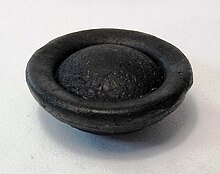Posted: Jul 30, 2010 12:57 pm
Robert Byers wrote:
snip...
They were [u]not made round but became round by processes. They first were not round.[/u]
snip...
Mr. Byers,
It seems you need a great deal of general education in geology. I've studied this subject for years and there remains far more than I can ever absorb. However, Mr. Byers, I do try to avoid making sweeping assertions in public postings, such as this snipped quote above.
Naturally occurring round rocks:
Link to pdf.
Prim, Arkansas
Very near to my home, less than 15 air miles, there exists a geological formation that holds round boulders that range in size from 12" to 48". These are not formed by previous tumbling in water or any other such action and are distinct from the encasing matrix. I have seen the stones both in the formation and exhumed stones and indeed they are very near spherical, some of them so round that they LOOK man made. These rocks formed in-situ, or in place. These rocks are very hard and resist weathering far more than the matrix, thus exposing them.
"Worldwide, spherical boulders are not unique. They are well documented in geological literature and on the Internet. McBride, Picard, and Milliken (2003) studied the formation of large spherical sandstone concretions in Cretaceous deposits of Wyoming and Utah. They concluded that calcite cement was locally derived, most likely from original carbonate shell material contained within individual sandstone units. Fossil Beach on Kodiak Island, Alaska, is known for its spherical boulders, which formed in siltstone as calcite cement grew radially around fossils. Near Tafraoute in Morocco, spherical boulders as large as small houses are present along the roadside."
Don't EVEN think about bringing up the stone balls from Central America, because I can point to methodology to DETECT engineering, and cite studies to support same.
So, do we find small round rocks, which are formed by natural non-erosive, causes as well as these boulders? You bet!
WIKI on tektites. (why bother with real papers for now, which I doubt would be read)?
Besides little round blobs the cool thing is shapes like this that REALLY look designed!
:

:

:
Aerodynamically shaped Australite; the button shape caused by ablation of molten glass in the atmosphere.
So I have shown that round rocks from tiny to huge can and do occur without any design influence or tumbling action. Sorry Robert, no flood support there.
Can't you just TRY to engage your sense of need for accuracy, and apply this in the posts you submit? I'm not buying the act anymore, but somebody might buy into your bullshit, so...round rocks anyone?
RS
ETA: round